- Thread starter
- #341
Add drainage holes and your good. Add some sort of rock or clay powder or roasted powdered egg shells also.
How To Use Progressive Web App aka PWA On 420 Magazine Forum
Note: This feature may not be available in some browsers.
Good start! I would advise you not to leave your worm bin out in the elements. Rain can flood it, bad. Sun can overheat it, bad. Cold weather can freeze it, bad. Anywhere indoors or a garage you can put it is much better. I keep mine inside and it stays around 65 degrees which is ideal.
I rarely water mine, too much water is not great for the worm bin. I have been keeping moisture up in there simply by adding raw veggie scraps occasionally (I REALLY like carrot peels for this purpose). Also I add the sludgy end stuff from teas. I haven't actually watered my worm bin in well over 6 months.

I have a question regarding worm bins .. google will give a ton of different interior makeups .. some have bedding on top, others at the bottom, some in between a layer of moisture absorbing material and the food layer, topped off with more paper ...
I'm a bit at a loss what to do .. I shredded a couple of egg cartons in fairly big chunks, on top of that went some last autumns leaves, on top of that some compost and sand, topped off with more leaves and wood chips, lid placed loosely on top, to make ventilation possible. No drainage holes in the bottom yet ..
Any topic here people can point me to to fix my bin ?

Thanks COorganics! I'll wait and see what you post up, they'll just be bigger.

Good tip, bobrown -- thank you for that. Been thinking about an inexpensive RO system.. I googled the product and it appears there is a quick connect/disconnect feature to use it on a garden hose. Sounds like your is, plumbed in. Do you know anything about the garden hose method?
Hey guys. I am super interested in starting my own LOS. From what I've been gathering from this thread and others it seems to be relatively simple. My only problem is I do not have access to RO water. Anyways, I've been looking at soil recipes and mixes also. Can maybe a few of you post your mixes for me? I'd love to compare different ones. I'm completely new to this, I thought my GO nutrients were truly organic a few days prior to this post
Thanks!
I live in an area where everyone knows "Don't drink the water" so I have to go buy RO water for some pesos and have discovered from using it that yes it is ph'd at 7.
The problem I found is the Calcium and Magnesium is really low after the filtration and the plants suffer from it. I now have Lime in my soil to cover the Cal. and I water with diluted Coconut Milk for the Mag.
I live in an area where everyone knows "Don't drink the water" so I have to go buy RO water for some pesos and have discovered from using it that yes it is ph'd at 7.
The problem I found is the Calcium and Magnesium is really low after the filtration and the plants suffer from it. I now have Lime in my soil to cover the Cal. and I water with diluted Coconut Milk for the Mag.
SOIL BUILDING:Living Organic Soil (LOS)
I don't think there are many things more pleasurable than building a strong Living Organic Soil. I got so carried away yesterday with the HB mix that I forgot to get my enzyme tea done, so I made sure to get it going before I started into the LOS mix.
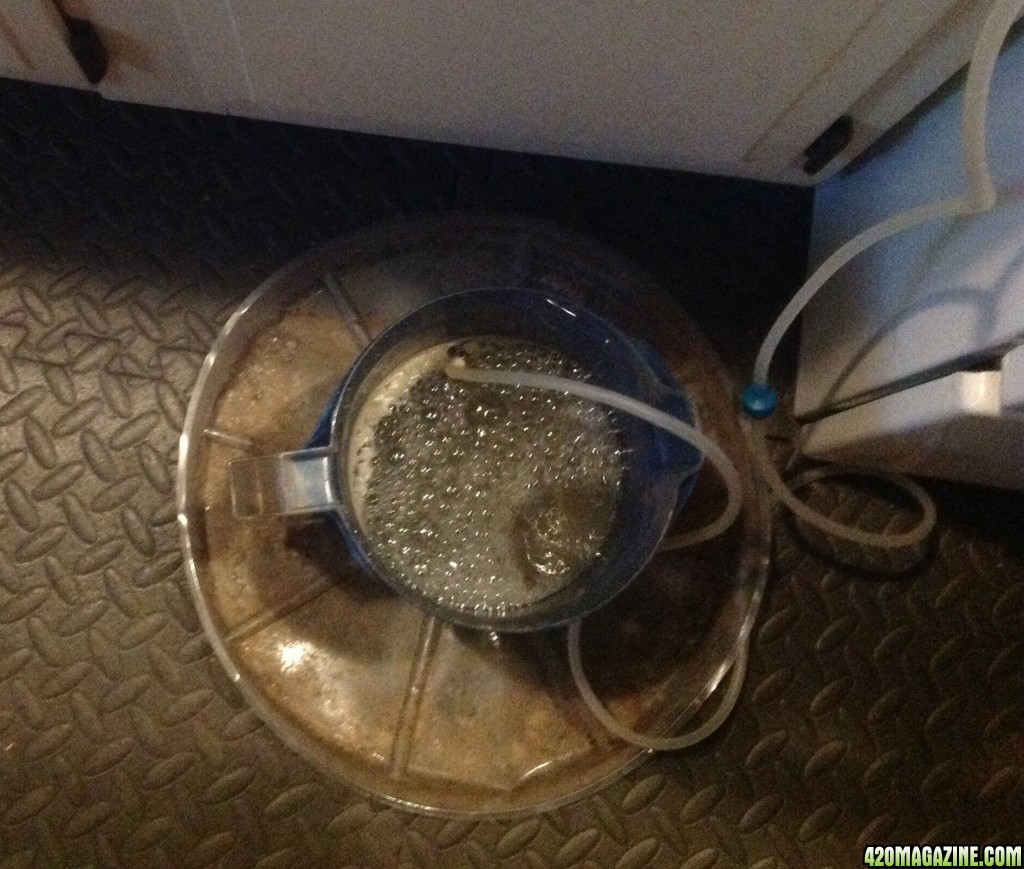
Tomorrow morning this will be configured into a nutrient-rich tea for the micro herd. I've been a bit remiss about this lately, but the soil can handle a bit of inconsistency.
Once again we begin by collecting rainwater. I'll need about a gallon and a half for this batch. I'm only mixing up a cubic foot of the LOS. I already have two pots. I just need some on hand for germinating and seedling stage.
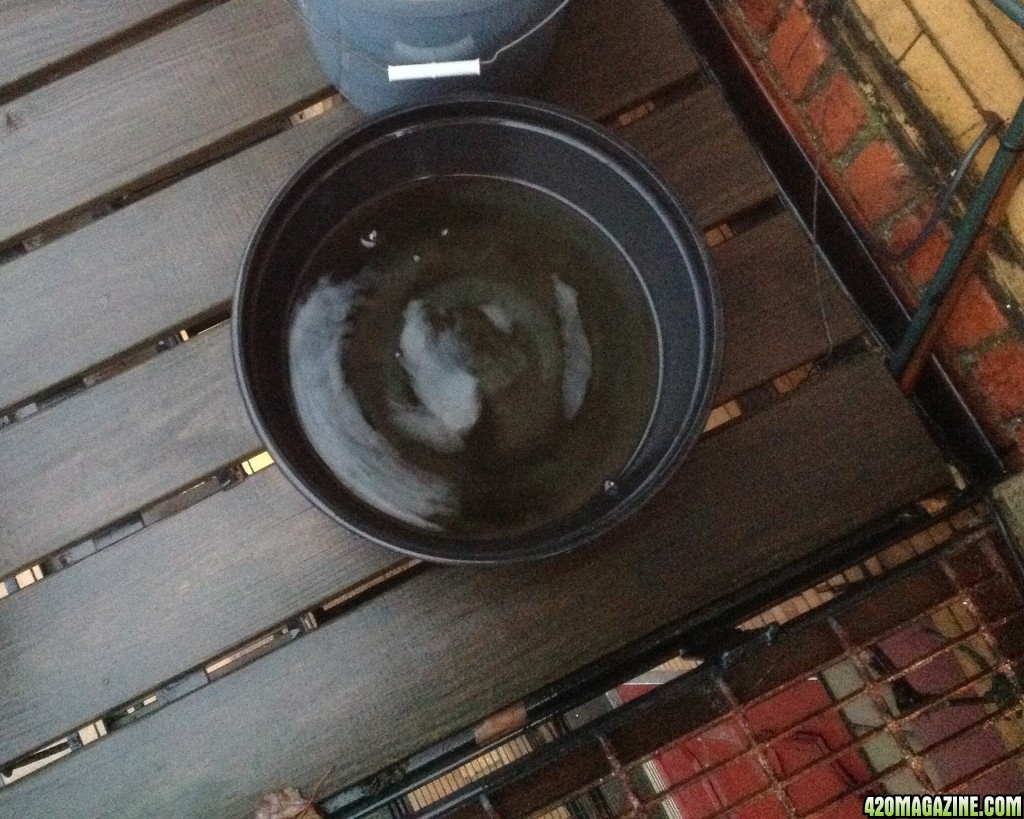
I thought of the HB as mixing the soil. Living Organic Soil is a building project to me. It's formulating a fine recipe to feed the herd. There's much more diversity in the mix.
My base mix is equal parts by volume of sphagnum peat moss, Worm Power vermicompost and pumice.
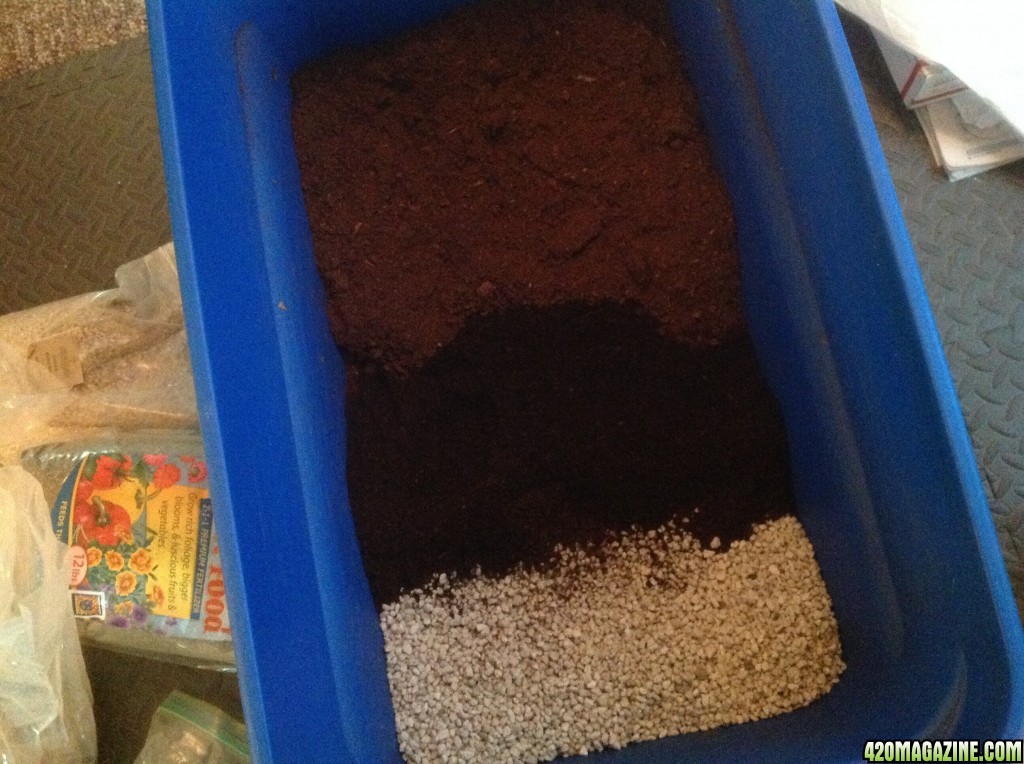
I was fascinated by the difference between Worm Power vermicompost and the Wiggle Worm EWC. Worlds apart in quality. I reminded myself that the HB mix uses this substandard EWC because you're controlling the phosphorous content. Sorry, it looks deficient to me. I love digging into the Worm Power. You can feel the energy ready to burst out. Look at me - excited about high quality worm pop!
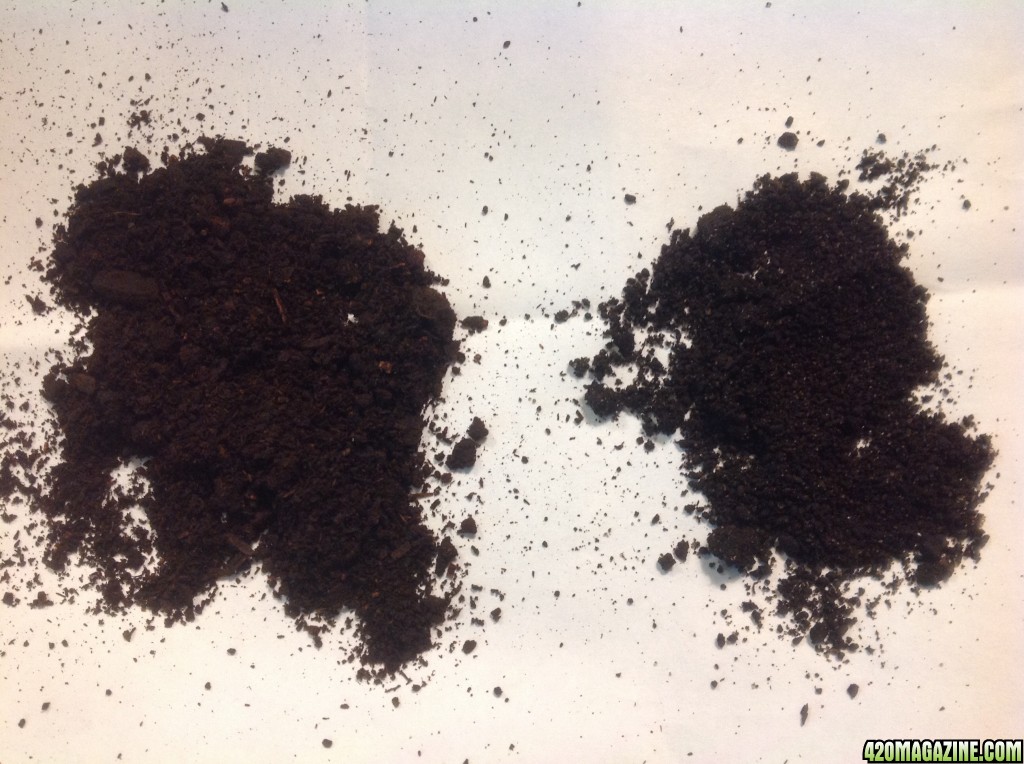
To the base we add 4 cups of the Clackamas Coots-style minerals mix and 1.5 cups of the accompanying. CC-style nutrient mix.
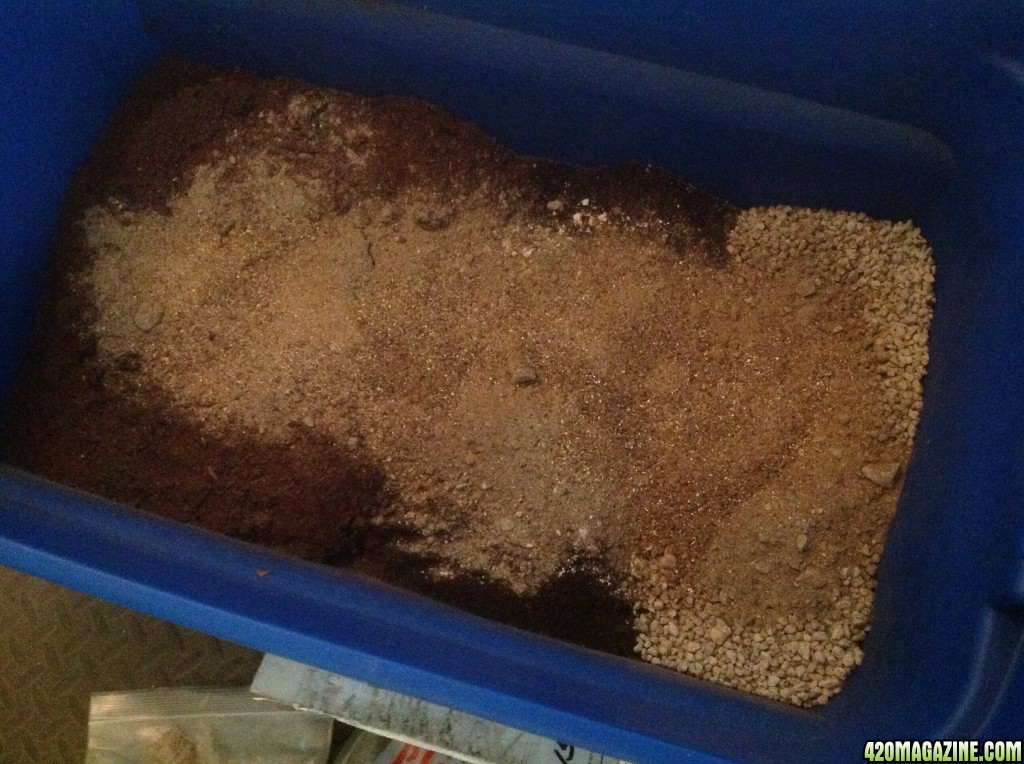
Coots has recommended adding the malted barley grain directly to the soil mix for the added enzyme boost. His success inspired me to do the same with this mix. It's something I will do from now on with each new batch. Using the coffee grinder purchased just for grinding malted barley I powdered up 2 cups of the grain.
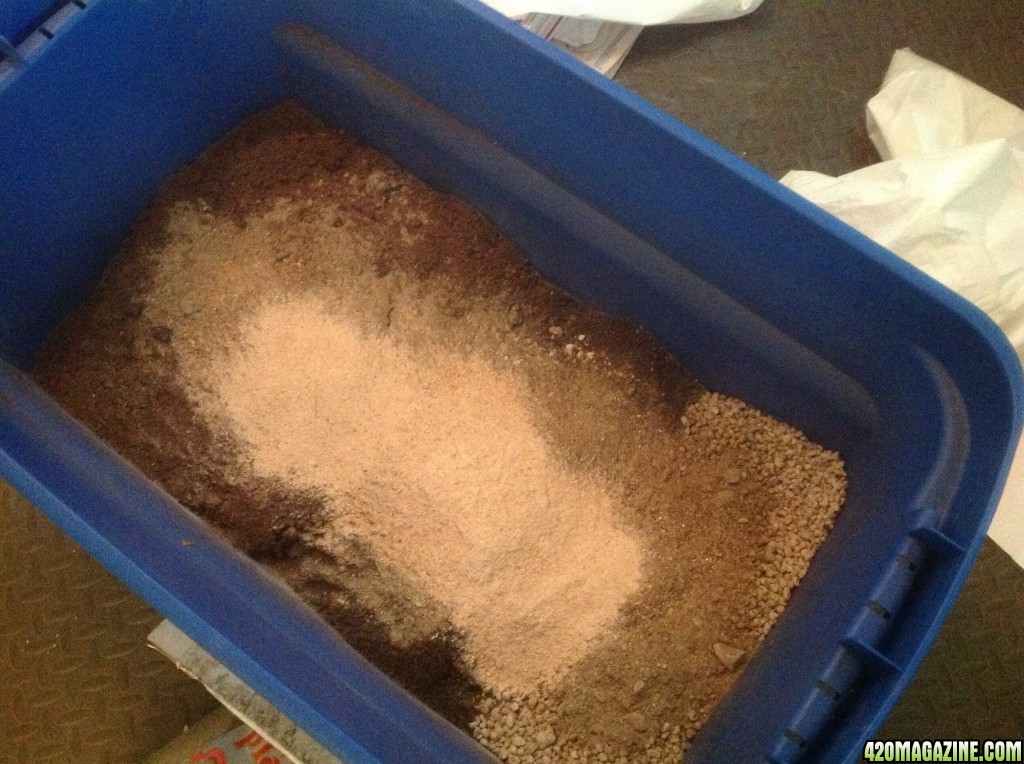
I have Yum Yum Mix, so 3/4 cup of that, along with 3/4 cup of zeolite (helps with water retention) and some biochar I had on hand, so why not? Only good can come of it. Oh, and about a half cup of some exotic Japanese river sands, just because they're interesting shapes and surfaces.
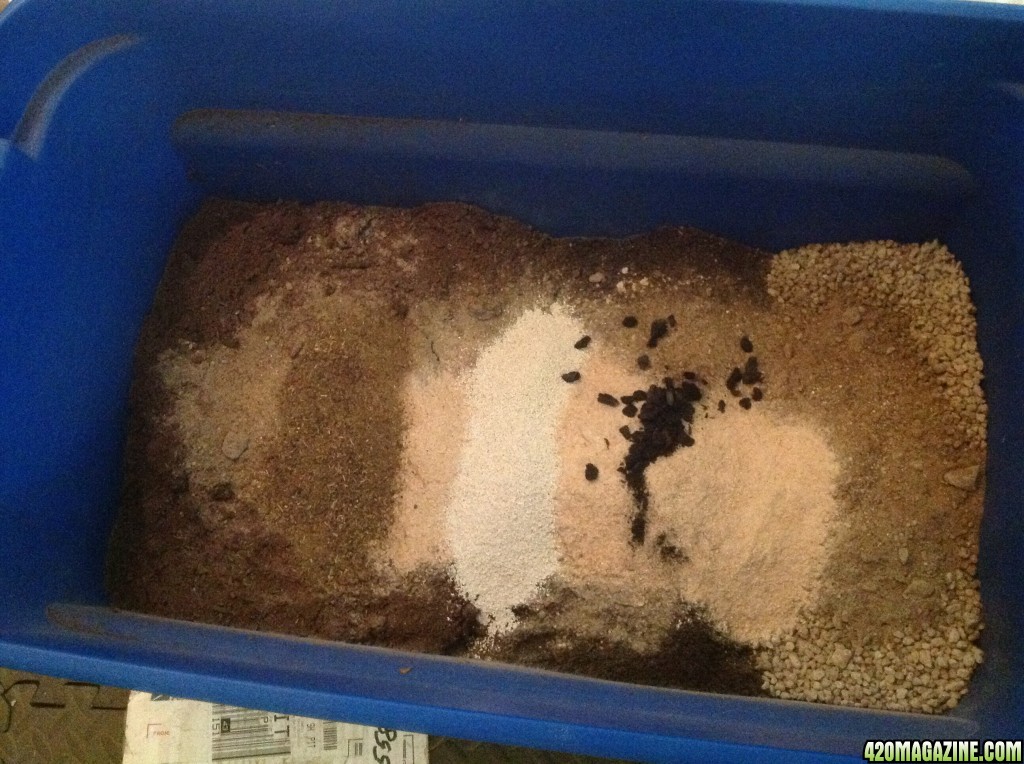
I use a SWICK watering system, which means I want extra aeration in the mix to help with all that wicking that will keep my soil matrix evenly hydrated. An evenly hydrated matrix means the micro herd and fungi can more efficiently shuttle nutrients around when called upon.
My choice for extra aeration is rice hulls. They're beautiful, fragrant, add silica to the food cart and some interesting surface areas for the micro herd. One of the things I'm always trying to accomplish with my soil mix is a wide diversity of surface areas. I like to imagine the biota making use of all this diversity, places to hide and hunt, living out their destiny with an abundance of available options. It's that Mother Earth thing run amok again.
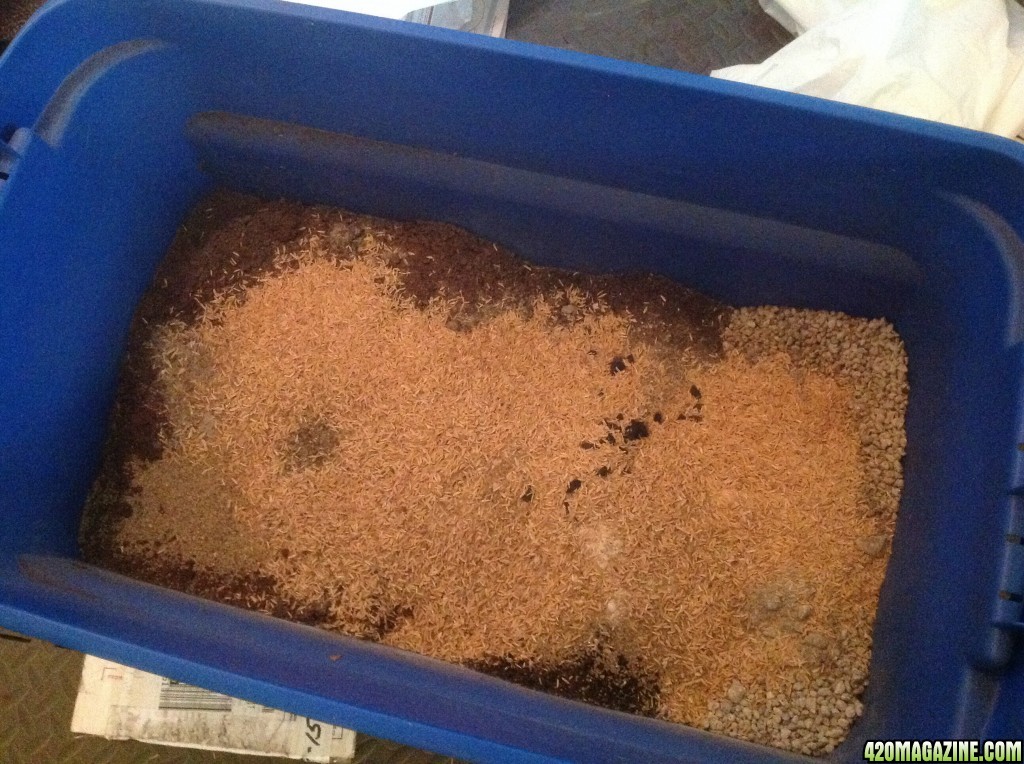
Now for my second favorite part - the initial mixing.
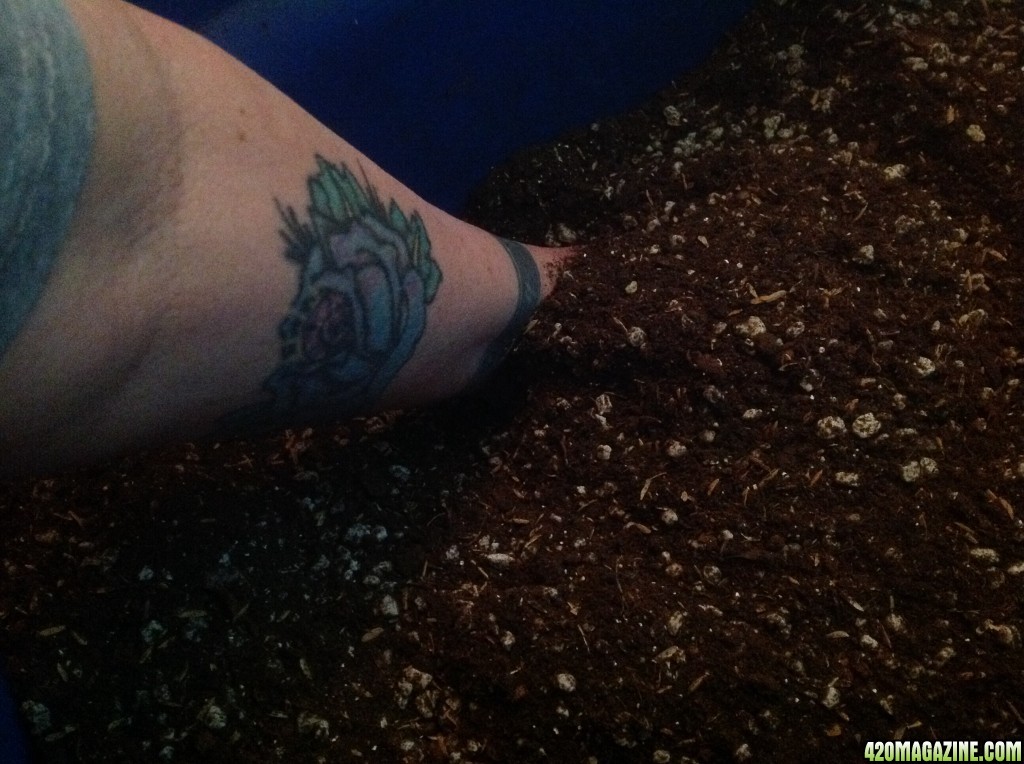
At this stage I'm working for a homogenous blend. There should be no big chunks of peat moss, so I break them up as I go. Then it's just dredge and lift, toss and tumble, mix and churn until everything looks completely dispersed throughout.
Using the Chapin, spray with 1 1/2 gallons of rainwater.
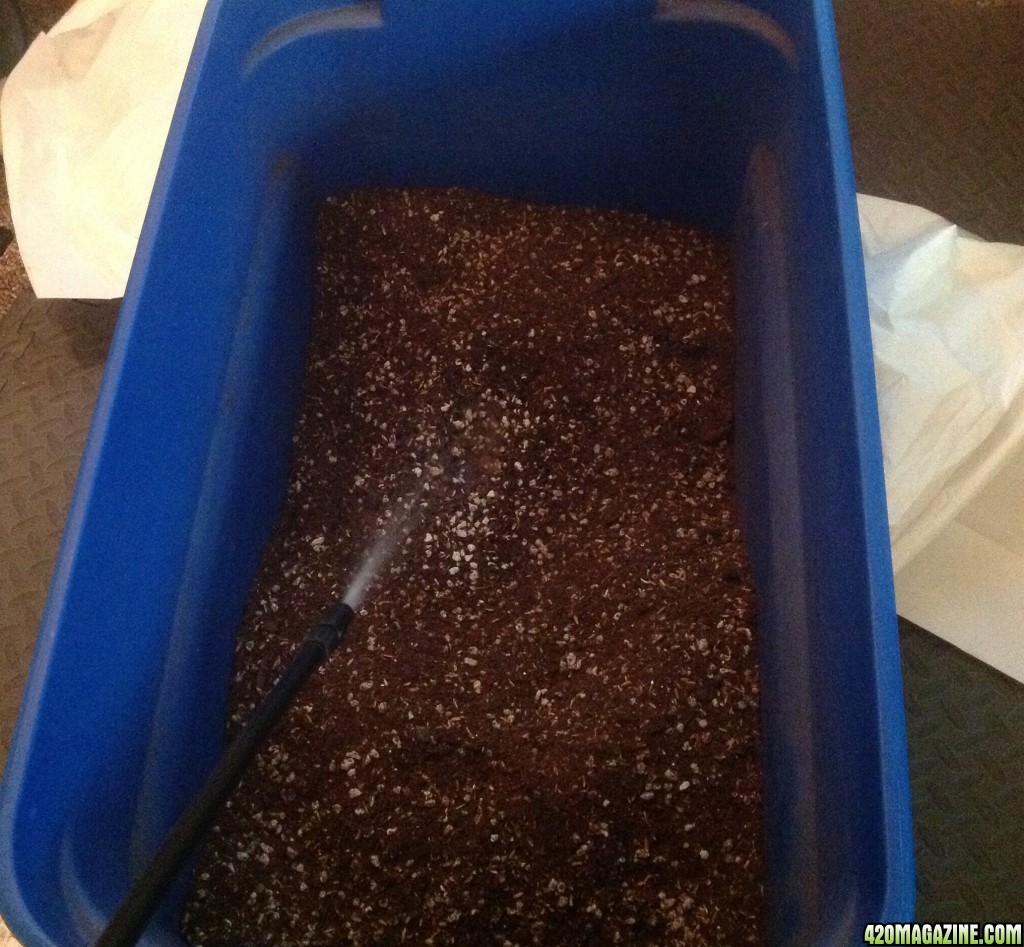
My favorite part - the final mixing.
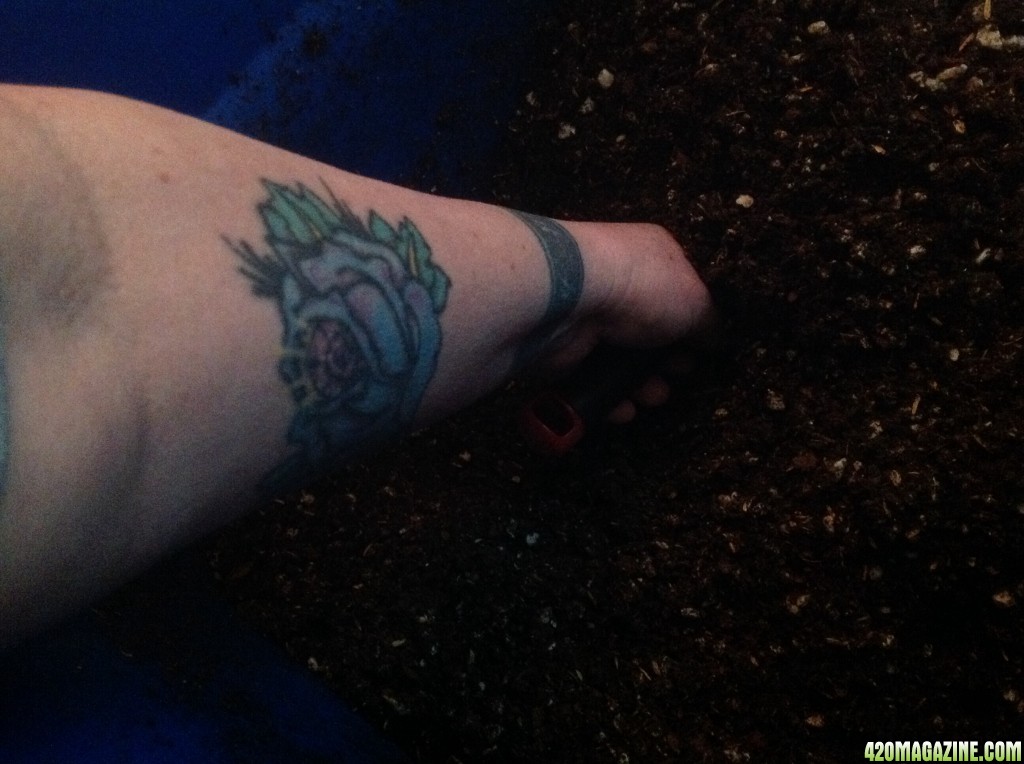
I love the feel of the soil components, the smells of the mingling. Using my bare hands allows for a finer mix IMHO. Any larger pieces of peat are easier to feel than see at this stage and, darn it, I just LOVE getting my arms up to the elbow in fabulous soil. This soil fills ME with energy. You can imagine the happy plants that will benefit from my efforts today.
I mean really, isn't this just the most beautiful stuff? You should smell it. Dank and sweet at the same time. It smells like life to me.
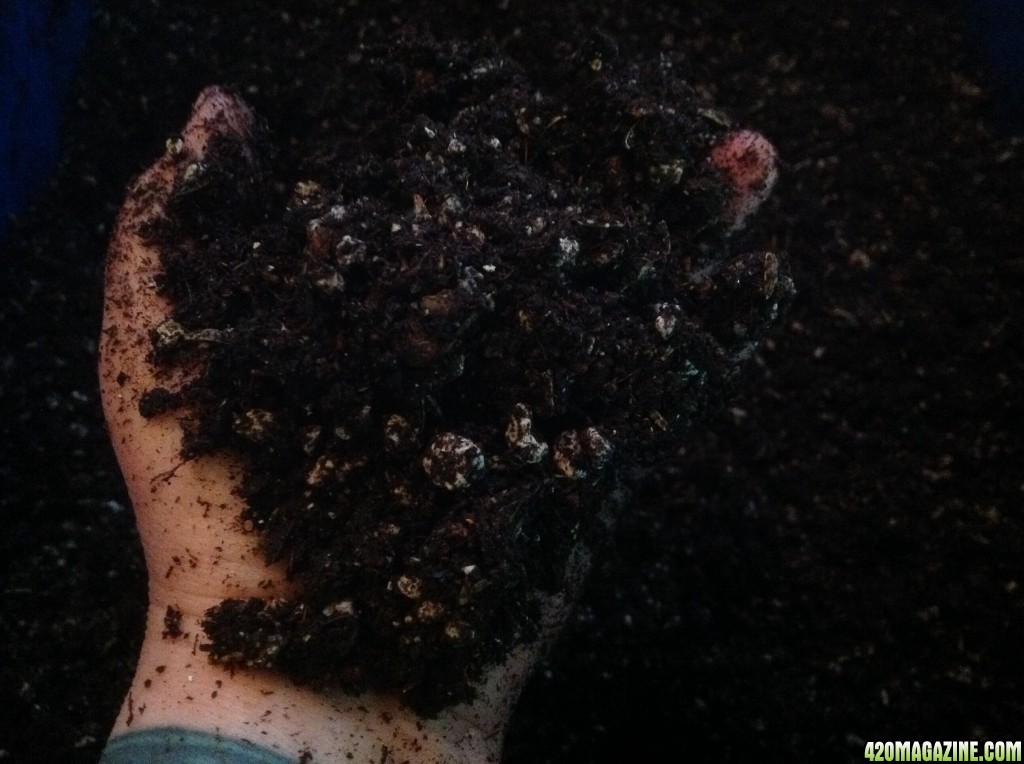
Water and mix, water and mix - the time is lost in the joy of playing in the dirt. I could never do this with gloves.
It's hard not to linger a moment and just appreciate all this loveliness. Life will spring from this soil that will help my family be healthier. What a blessed thing, eh?
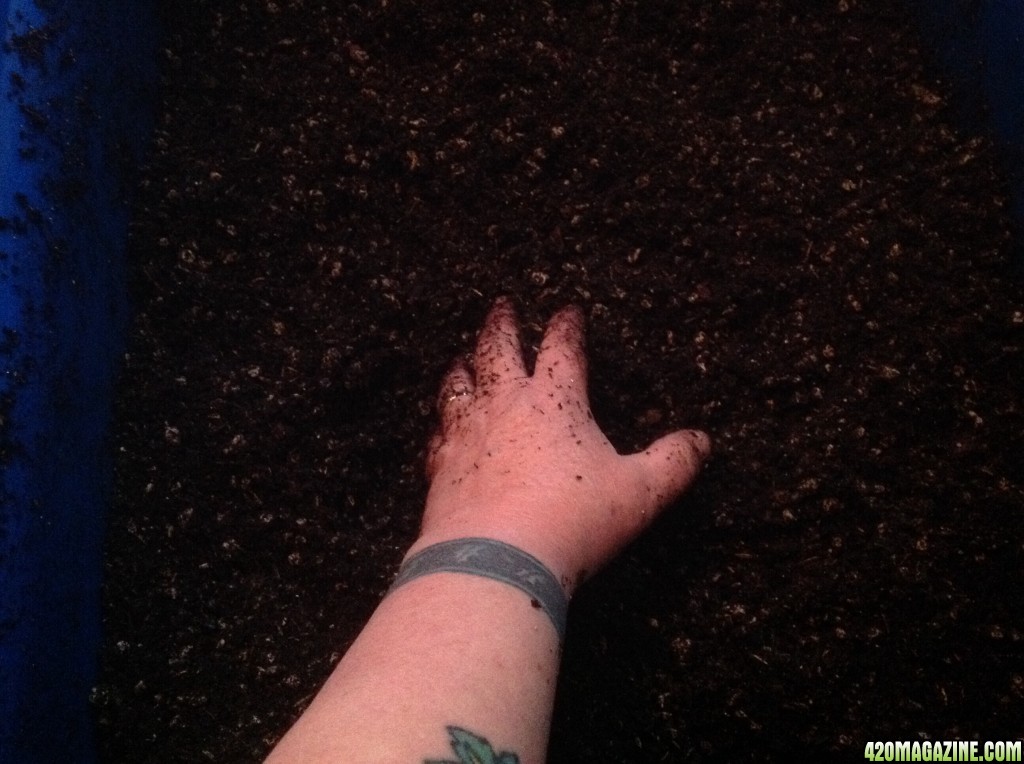
The soil building is complete. It will be covered and stored, being turned once a week for the next month.
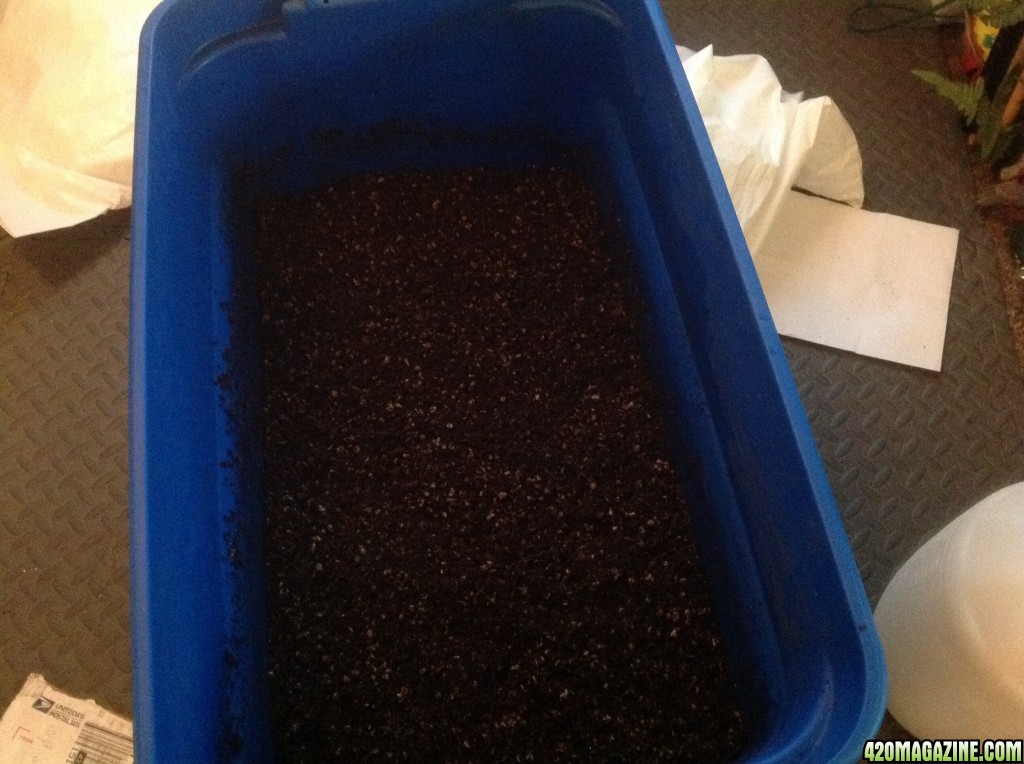
Both soils cooking. The countdown begins.
Notice the HB soil is in the electric blue tote. I thought that appropriate.
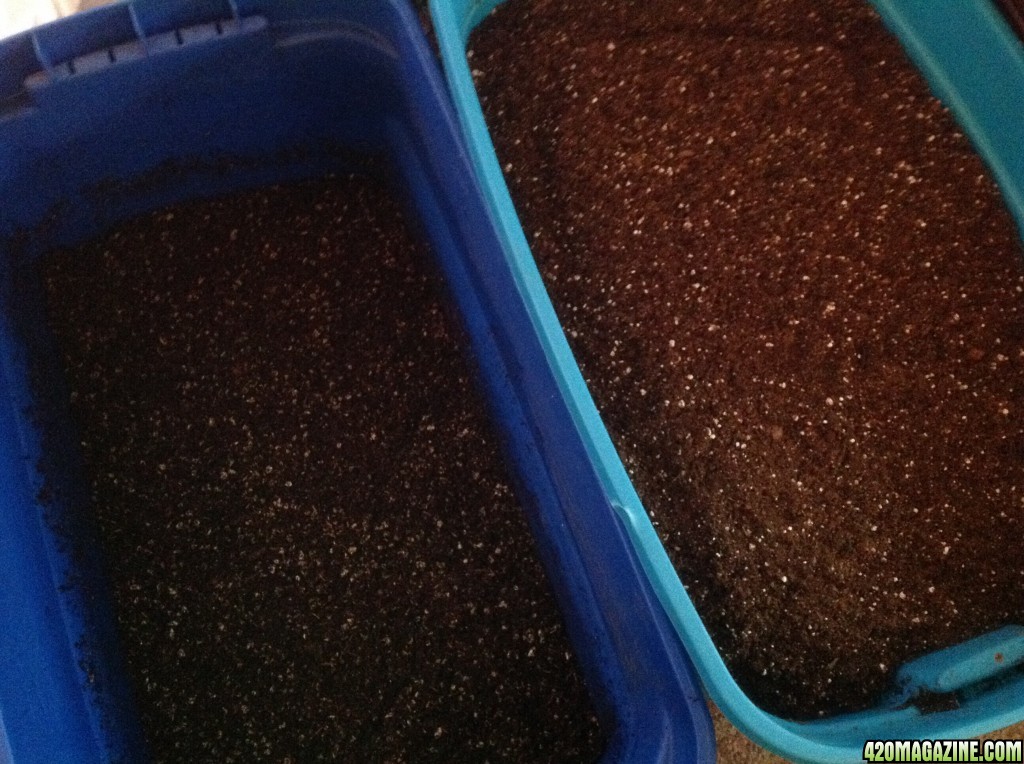
Thank you for sharing in my joy through the soil building process. Now begins the hardest part - the waiting. I have much to do though, between now and May 7, when these soils will be ready for planting.
DrZiggy, are you as excited as I am?????